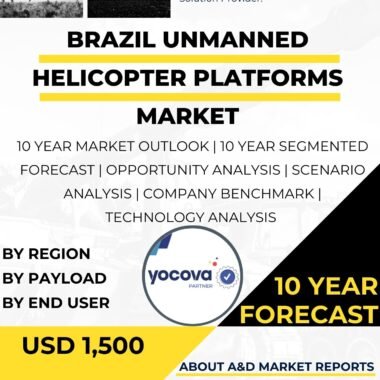Description
Unmanned Aerial Vehicles (UAVs) have revolutionized military, commercial, and scientific operations over the past few decades. Among them, Unmanned Helicopter Platforms have gained significant attention due to their versatility, autonomy, and efficiency in a wide range of applications. In the United States, several cutting-edge unmanned helicopter platforms have been developed and deployed, showcasing the country’s commitment to advancing aerial technology. This article provides an overview of some notable unmanned helicopter platforms in the US, highlighting their capabilities and applications.
The MQ-8 Fire Scout, developed by Northrop Grumman, is a vertical takeoff and landing (VTOL) unmanned helicopter. It serves as a reconnaissance, surveillance, and targeting asset for the US Navy. Equipped with sophisticated sensors and communication systems, the Fire Scout aids in maritime intelligence, reconnaissance, and surveillance missions, making it a valuable asset in naval operations.
The RQ-21A Blackjack, manufactured by Insitu, a subsidiary of Boeing, is a small tactical UAV designed for land and maritime operations. Deployed by the US Marine Corps and Navy, it is used for intelligence, surveillance, reconnaissance, and target acquisition tasks. Its portability, endurance, and advanced payload options enable it to support ground forces in a variety of challenging environments.
Sikorsky Autonomy Research Aircraft (SARA), developed by Sikorsky (a Lockheed Martin company), is an experimental unmanned helicopter that has played a crucial role in advancing autonomous flight technology. It serves as a testbed for various autonomous systems, including advanced sensing, processing, and control algorithms. The knowledge gained from SARA’s flights has contributed significantly to the development of next-generation unmanned systems.
AeroVironment, an American technology company, has introduced the Snipe Nano Quad rotor, a small and lightweight unmanned helicopter designed for close-range reconnaissance and surveillance missions. Weighing less than one pound, the Snipe can be easily carried by dismounted soldiers and operated in confined spaces. It provides real-time video feed and geo-location data, enhancing situational awareness for troops in the field.
The Boeing A160 Hummingbird, now acquired by the US Army, is an innovative unmanned helicopter with a unique coaxial rotor design. Its versatile payload capacity allows it to carry various sensor suites, making it suitable for roles such as reconnaissance, surveillance, target acquisition, and communications relay. The A160’s long endurance and high altitude capabilities are advantageous for missions requiring persistent aerial coverage.
Developed by Piasecki Aircraft Corporation, the X-49A SpeedHawk is an experimental unmanned helicopter based on the H-60 Black Hawk airframe. By retrofitting the Black Hawk with various autonomous systems, the X-49A aims to demonstrate the feasibility of converting manned helicopters into unmanned platforms, potentially extending the service life of existing aircraft while reducing crew risk.
The Northrop Grumman TERN (Tactically Exploited Reconnaissance Node) is a unique unmanned VTOL system designed to operate from small naval vessels. TERN’s ability to take off and land vertically allows it to overcome the limitations of traditional fixed-wing UAVs in confined shipboard environments. It serves as an intelligence, surveillance, and reconnaissance platform for naval operations, enhancing the fleet’s situational awareness and response capabilities.
Developed by Aurora Flight Sciences, a Boeing subsidiary, the Orion unmanned helicopter is designed for heavy-lift missions, capable of carrying payloads weighing up to 1,200 pounds. The Orion’s lifting capacity makes it ideal for logistical support, resupply missions, and transporting equipment to remote and inaccessible areas.
The US Air Force has invested in unmanned helicopter platforms like the Kaman K-MAX, an optionally piloted aircraft primarily used for cargo resupply missions. The K-MAX can autonomously lift and transport heavy payloads in challenging environments, reducing the need for manned helicopter support in dangerous or remote locations.
In addition to military applications, unmanned helicopter platforms have proven valuable in scientific research and environmental monitoring. For instance, the National Aeronautics and Space Administration (NASA) has used the Yamaha RMAX, a commercial unmanned helicopter, for studying and mapping wildfires, enabling better firefighting strategies and improved understanding of fire behavior.
In conclusion, the United States continues to lead the way in the development and deployment of advanced unmanned helicopter platforms. These cutting-edge systems have demonstrated their capabilities in various domains, from military reconnaissance and surveillance to scientific research and disaster response. As technology continues to evolve, unmanned helicopter platforms are likely to play an even more significant role in shaping the future of aviation and aerial operations across the nation and the world.




